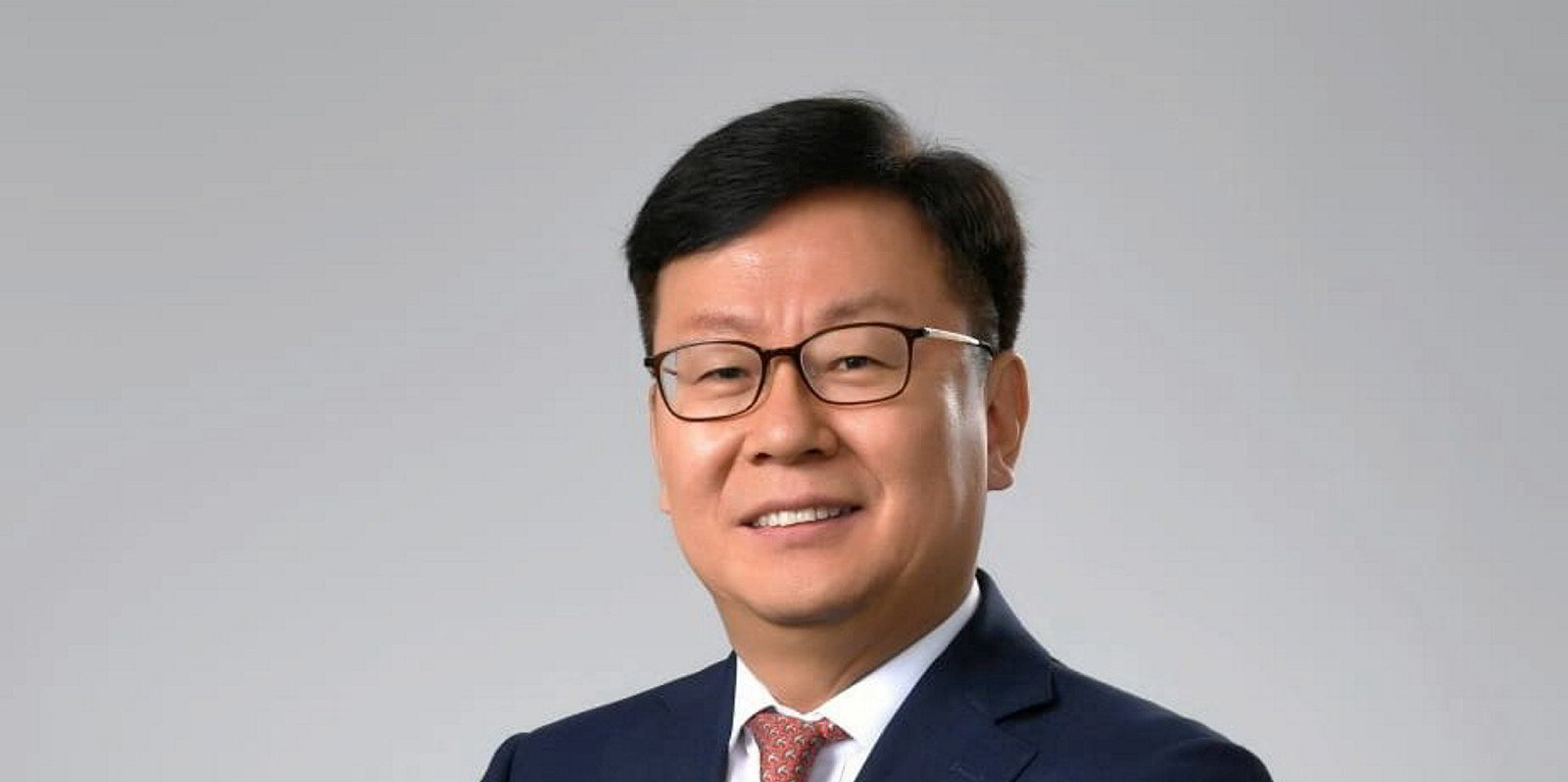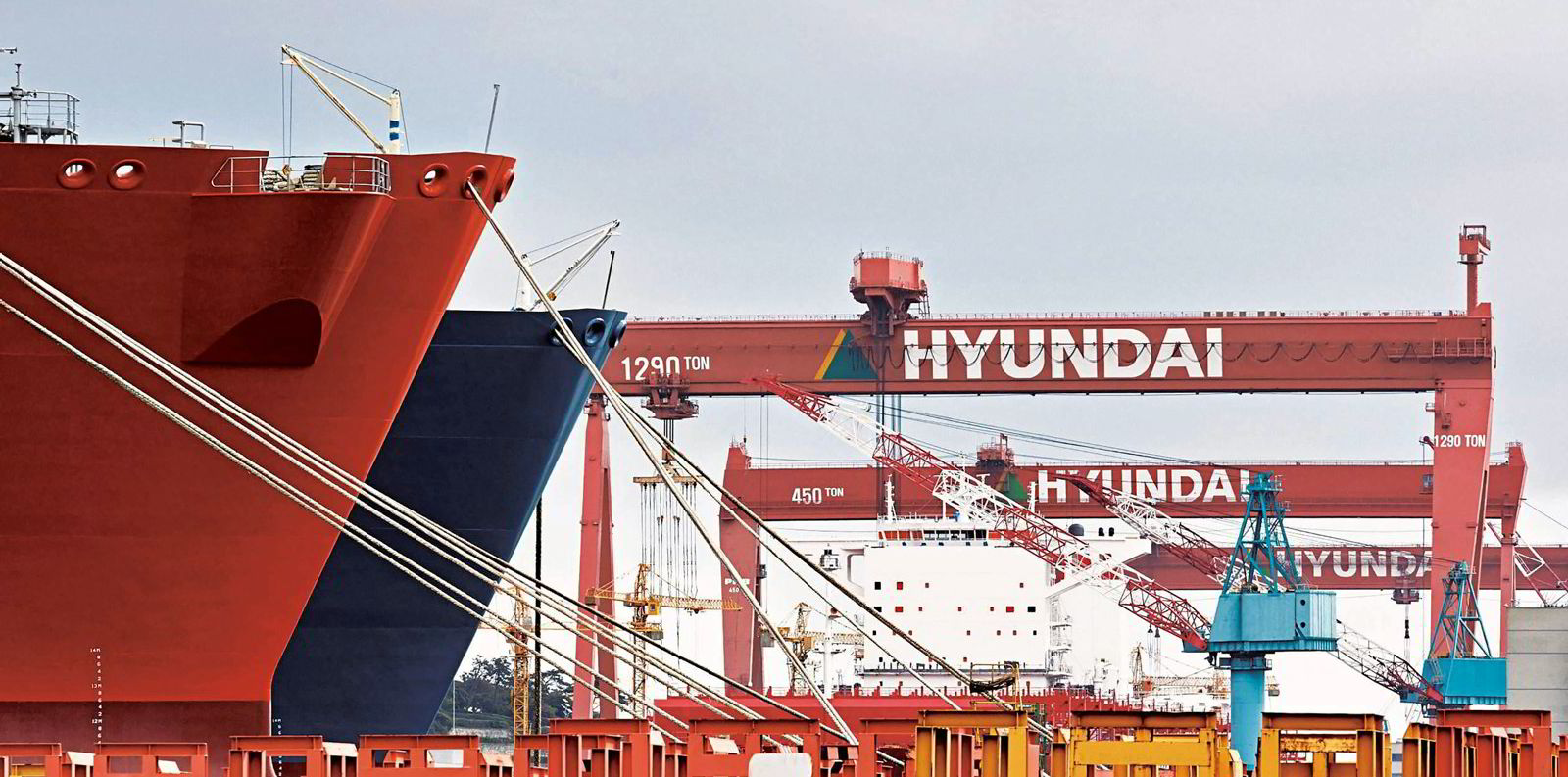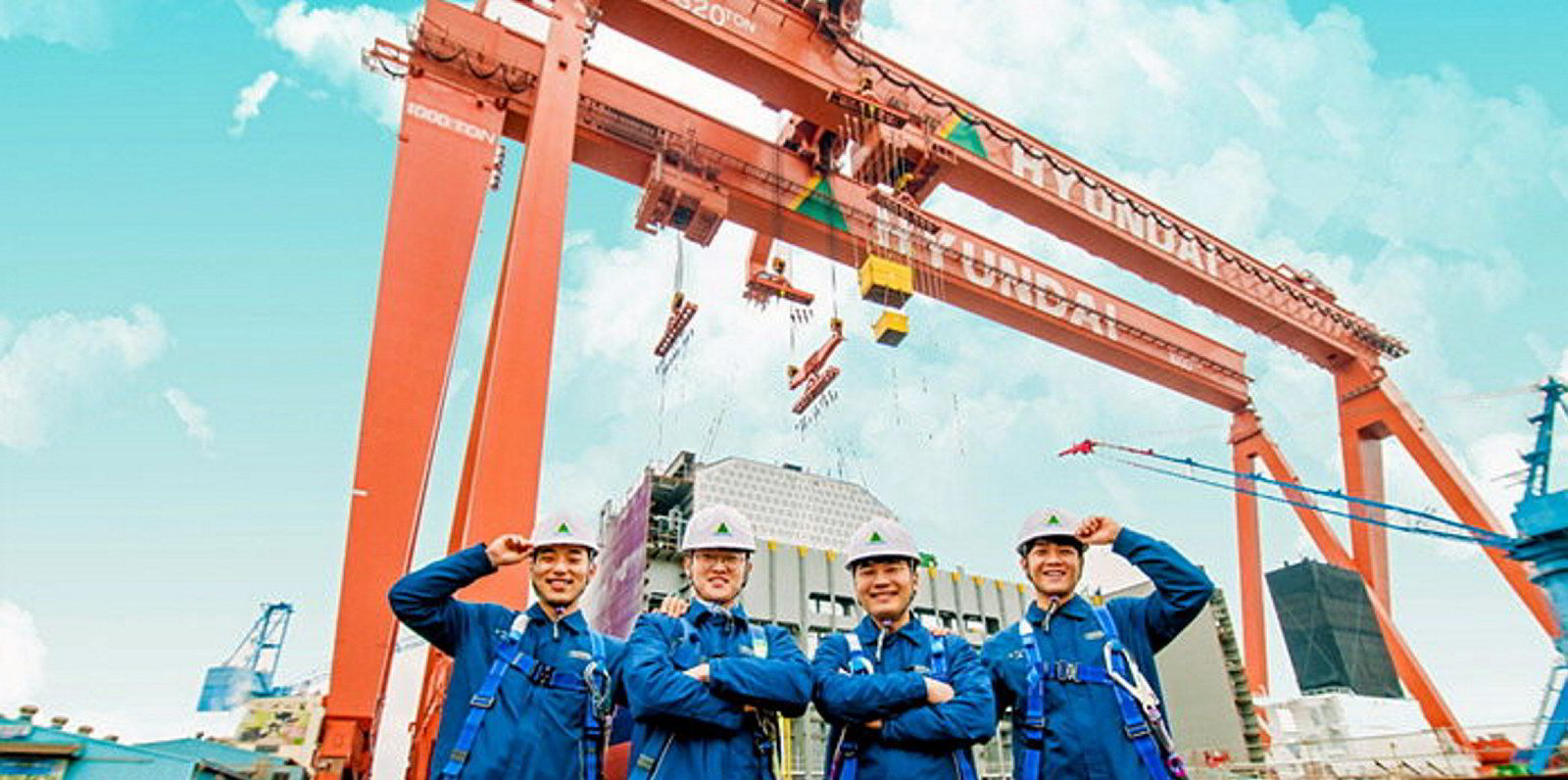High shipbuilding prices and economic headwinds have resulted in lower volumes of newbuildings being ordered this year. But this has not stopped Korea Shipbuilding & Offshore Engineering, which controls the Hyundai group of shipyards, from achieving its annual order target of $17.44bn — three months before the end of the year.
Seung-Yong Park — also known as SY Park — chief operating officer and senior executive vice president of Hyundai Heavy Industries, said his company had contracted about $21.5bn-worth of newbuilding orders as of the end of September and is set to score $25bn-worth by the end of the year — the highest since 2007. LNG carriers and container ships make up the bulk of the orders.
This is the second year in a row that HHI has hit its order target. In 2021, it secured $22.8bn-worth of orders, exceeding its annual target by about 53%.
“Our shipyards have secured 42 LNG carriers, 51 large container vessels and 43 small boxships,” Park said. “Nearly 80% of the newbuildings that were ordered at Hyundai Heavy Industries and Hyundai Samho Heavy Industries were dual-fuelled vessels as compared to last year’s 40%.”
HHI and Hyundai Samho’s slots for LNG carriers are largely booked until the end of 2026 and they are not actively promoting 2027 delivery slots due to uncertainties over pricing. However, the shipyards are still able to accept orders for conventional commercial vessels, such as tankers and container ships, for their remaining slots in 2025.
Sitting on a ballooning backlog, HHI has revived its closed down Hyundai Gunsan shipyard this month to fabricate hull blocks as there is a shortage due to high newbuilding order volumes.
Hyundai Gunsan was built at the height of the shipbuilding boom in 2007 but was shut down five years ago due to a downturn in the shipbuilding industry. The shipyard will hire 750 subcontractors to produce 100,000 tonnes of blocks annually that will be supplied to HHI, Hyundai Samho and Hyundai Mipo Dockyard.
Several shipbuilding observers think Hyundai Gunsan may end up constructing whole vessels as the shipyard is equipped with one large dry dock and has previously delivered 93 ships, including VLCCs, container vessels, large bulk carriers, pure car/truck carriers and VLGCs.
But Park said Hyundai Gunsan will not be used for constructing newbuildings as that would require a lot of resources to get the yard up and running and that the shipbuilding industry is facing a shortage of labour.
So what would make him open the shipyard for newbuilding work? If “someone is able to promise Hyundai that Gunsan shipyard is able to receive 20 newbuildings per year for the next 20 to 30 years”, he said.
“When we closed down [the] Gunsan shipyard, we had so many problems with the local community and we do not wish to go through that again,” Park said.






